Some of the treasures put on show by the Allen Exploration team - with a museum showcasing what has been found from a sunken Spanish Galleon due to open on Monday.
By YOURI KEMP
Tribune Business Reporter
ykemp@tribunemedia.net
The Treasure hunter salvaging the wreck of a sunken Spanish Galleon is set to open their museum on Monday, showcasing what they have found in Bahamian waters to date.
Allen Exploration says their museum will tell, “the story of The Bahamas’ rich maritime legacy for the first time”.
The Bahamas Maritime Museum will “explore the themes set around The Bahamas’ sunken crown jewel: remains of the shipwrecked Spanish galleon the Nuestra Señora de las Maravillas (Our Lady of Wonders), lost off the northern islands on January 4, 1656,” said a company release.
“The 891-ton Maravillas was part of the Tierra Firme (Mainland) fleet, homeward-bound to Spain from Havana, Cuba, with royal and private consignments. Also onboard was a former Spanish cargo wrecked off Ecuador a year-a-half earlier. The Maravillas ended up colliding with its fleet flagship, hitting a reef 30 minutes later and sinking.”
Allen Exploration has been salvaging the wreck since being given a licence in 2020 under the Dr Hubert Minnis, Free National Movement administration. The licence was subsequently renewed by the Davis new administration upon coming into office.
Allen Exploration is supposed to remit 25 percent of their salvage to The Bahamas government, with the company retaining 75 percent, something which has caused controversy as two sitting cabinet ministers have questioned the arrangement and openly requested a change in the percentage to favour that of the government of The Bahamas rather than the company.
Nothing from the Maravillas will be sold and all will be held in a museum for the benefit of the general public, Allen Exploration promises. This claim too has come under criticism as a lawyer representing the government of Spain said any sunken treasure should be theirs despite Bahamian law not supporting their claim.
The company said, “Allen Exploration is currently exploring a debris trail left behind by the Maravillas and uncovering remarkable finds. Alongside Spanish olive jars, Chinese porcelain, iron rigging, and gold and silver coins, the team has discovered a silver sword handle that belonged to the soldier Don Martin de Aranda y Gusmán. Three gold chains have been saved, as well as four pendants worn by members of the sacred Order of Santiago, a religious band of knights deeply active in Spanish maritime trade. All these finds are unique among the world’s three million shipwrecks.
“The Maravillas is an iconic part of The Bahamas’s maritime history,” says Carl Allen, entrepreneur, explorer, philanthropist and the founder of Allen Exploration.
“The wreck of the galleon had a tough history: heavily salvaged by Spanish, English, French, Dutch, Bahamian and American expeditions in the 17th and 18th centuries, and blitzed by salvors from the 1970s to early 1990s. Some say the remains were ground to dust. Using modern technology and hard science, we’re now tracking a long and winding debris trail of finds. We’re delighted to be licensed by the Bahamian government to explore the Maravillas scientifically and share its wonders with everyone in the first maritime museum in The Bahamas.”
Mr Allen added: “Ten Spanish salvage expeditions brought up a huge chunk of the Maravillas’ treasure cargo. The galleon, though, was stuffed with contraband illegally greasing the palms of Spanish merchants and officials. Defrauding the Spanish Crown continued into the salvage years. Our archaeology is finding that most recovered coins were minted in Mexico. But the Maravillas didn’t officially load coins in Mexico. Illegal contraband again raises its suspicious head.”
A company statement added: “Allen Exploration’s team, made up of marine archaeologists, operations’ directors and local Bahamian divers, has plotted over 8,800 magnetometer targets across a search area measuring around 12 x 8 kilometers. The position of every artifact is mapped from potsherds and iron hull fasteners to rigging, coins, ballast and high-status goods. The finds fit the profile of personal property that drifted miles away from the central wreck on broken sections of the wooden hull.
“By mapping each type of find, AllenX is finally reconstructing the mystery of how the ship was wrecked and fell apart,” says project marine archaeologist James Sinclair. “This isn’t just forensic marine archaeology. We’re also digging into former excavations, working out what previous salvage teams got up to, where and why. So much data has been sadly lost from this ravaged wreck. AllenX’s respectful, science-led approach to the Maravillasis reversing former trends.”
“The star finds from AllenX’s exploration so far are the Order of Santiago jewels. A golden pendant with the Cross of Santiago (St. James) at its center, just 3.5 centimeters long, was designed in the form of a scallop shell. The pendant is reinforced on its back edge by what is seemingly an Indian bezoar stone, famous in Europe for its powerful healing properties.
“Scallops were picked up along the coast of Galicia and carried home by pilgrims who had visited the shrine of Santiago de Compostela, one of Europe’s most important pilgrimage centers, built by King Alfonso III in AD 899. The Basilica of St. James supposedly held the apostle’s bones. Knights of the Order of Santiago were charged since medieval times with protecting from attack the 800-kilometer pilgrim’s route stretching from the Pyrenees to Galicia.
“A second golden pendant found on the Maravillas’ debris trail is oval in shape and 4.7 centimeters long. At its centre a gold Cross of St. James overlies a large green oval Colombian emerald. The outer edge is framed by 12 more square emeralds, perhaps symbolizing the 12 apostles. To these can be added the team’s discovery of a 5.3-centimeter majestic oval gold locket with an elaborate cross of St. James framed by swirling foliage incised on the back, and a tiny golden cross, probably fallen out of another pendant. All these artworks were crafted to an exquisite standard and are again unique among excavated remains, museum collections and portrait art.”
Allen Exploration also said that they found 18 more wrecks while searching for the Maravillas and that there are “hundreds” more on the Little Bahama Bank and “thousands” spread all around The Bahamas.
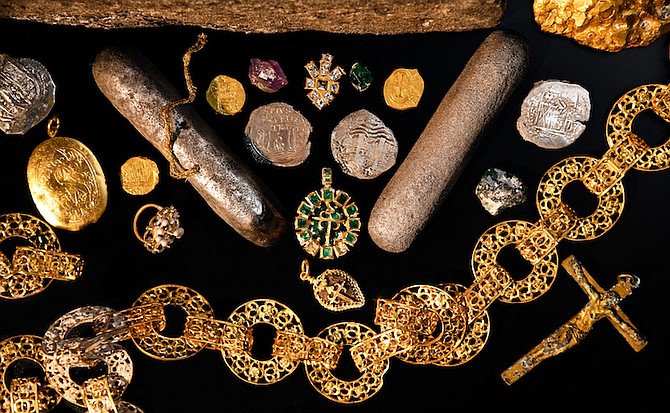
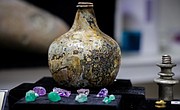
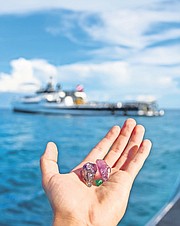
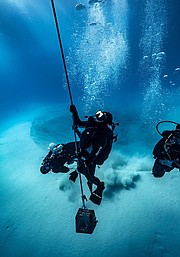
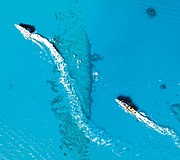
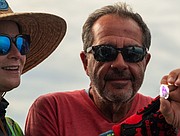




Comments
TalRussell 1 year, 8 months ago
It has mysteriously gone unreported, kept secret as Hurricane Dorian winds howled. ---Caused roofs slide off and windows begin to flutter, it wasn't long before Abaconian popoulaces began to discover a good mix of long sunken treasures floating around their full of sea waters residences had levitated up from sea waters the Abacos --- Reaching roof levels. --- Some Protestant and Presbyterian treasurer herders who's pockets were left empty after hurricane's destruction are quietly estimating its potential values can fetch upwards in the hundreds millions sand dollars. ---Yes?
Flyingfish 1 year, 8 months ago
This is very positive news to hear, I just recommend that the Museum Admins, have an evacuation plan for artifacts during hurricanes as GB doesn't have a good record with that. As well as a heavy duty security system that will deter any burglary and proper vetting of anyone associated with the museum.
Personally I think a NP based museum would be better suited in terms of accessibility/visitation but then security wise GB is probably better.
Sign in to comment
Or login with:
OpenID